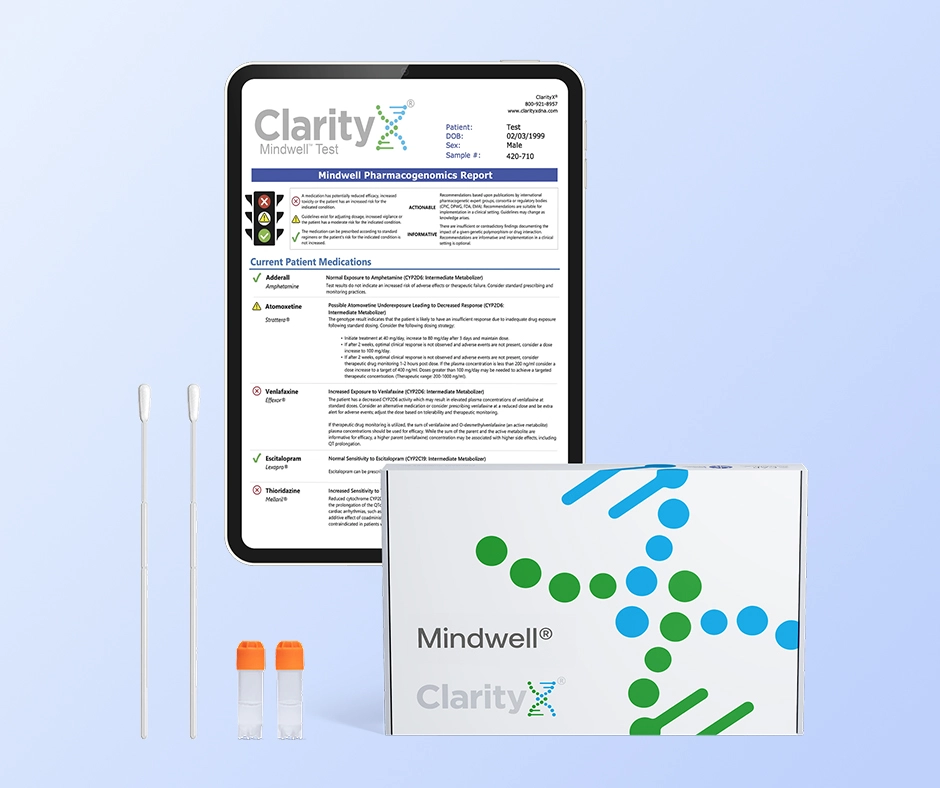Key Highlights
- Austedo (deutetrabenazine) and Ingrezza (valbenazine) are prescription medications used to treat movement problems in Huntington's disease and tardive dyskinesia.
- Austedo and Ingrezza have similar active ingredients and mechanisms of action. The presence of deuterium in Austedo can impact the way the medication is broken down in the body.
- Austedo can require more frequent dosing than Ingrezza, but Austedo XR provides an extended-release option that is also dosed once daily.
- The two have not been compared head-to-head for potential side effects, but Austedo appears to have caused fewer side effects like insomnia, depression, and anxiety. Both medications carry warnings related to depression and the potential for suicidal thoughts, however.
- Austedo may carry a lower risk for potential drug interactions because of the way it is processed in the body.
- Insurance coverage and out-of-pocket expenses can heavily influence treatment decisions.
Introduction
Uncontrollable body movements can profoundly impact a person's quality of life, especially for individuals living with conditions like Huntington's disease or tardive dyskinesia. These movement disorders can result in jerky, involuntary movements that can worsen over time. While there is no cure for these conditions, medications are available that can help manage the symptoms and improve the overall quality of life for patients.
Two such medications are Austedo (deutetrabenazine) and Ingrezza (valbenazine). These prescription medications belong to a class of drugs called vesicular monoamine transporter type 2 (VMAT2) inhibitors. They work by reducing the levels of certain chemicals, such as dopamine, in the brain, which can help calm down the involuntary movements associated with these conditions.
This blog will explore the key highlights, similarities, and differences between Austedo and Ingrezza to help you choose the right medication. We will delve into their active ingredients, approved uses, dosages, side effects, effectiveness, and cost considerations. By understanding the unique aspects of each medication, you can make an informed decision in collaboration with your healthcare provider.
Understanding Austedo and Ingrezza
Before diving into the specifics of Austedo and Ingrezza, it is important to understand the conditions they are used to treat.
Tardive dyskinesia is a movement disorder characterized by repetitive, involuntary movements of the face, tongue, and other body parts. It is often caused by long-term use of certain medications that affect dopamine levels in the brain. Huntington's disease, on the other hand, is a genetic brain condition that leads to the progressive breakdown of nerve cells, resulting in chorea, a type of involuntary movement disorder.
Both Austedo and Ingrezza target the vesicular monoamine transporter type 2 (VMAT2), a protein found in nerve cells that regulates the levels of dopamine and other chemicals in the brain. By inhibiting VMAT2, these medications can help reduce the symptoms of tardive dyskinesia and chorea in Huntington's disease.
What is Austedo?
Austedo, also known by its generic name deutetrabenazine, is a prescription medication that the FDA has approved for the treatment of Huntington's disease and tardive dyskinesia. It is an oral tablet that belongs to the VMAT2 inhibitor class of drugs.
Deutetrabenazine works by regulating the levels of dopamine and other related chemicals in the brain, which can help manage the chorea symptoms associated with Huntington's disease. Sudden, jerky, and uncontrollable movements of the limbs, face, and torso characterize chorea.
The FDA approval of Austedo for the treatment of Huntington's disease and tardive dyskinesia was based on clinical trials that demonstrated its efficacy in reducing the severity of chorea symptoms compared to a placebo. Patients taking Austedo experienced significant improvements in their movement control.
It is important to note that Austedo is not a cure for Huntington's disease or tardive dyskinesia, but it can help manage the symptoms, which may improve overall quality of life.
What is Ingrezza?
Ingrezza is a medication used to treat adults with tardive dyskinesia, a condition characterized by uncontrollable movements. It works by blocking the effects of dopamine in the brain. Ingrezza can help reduce abnormal movements and may improve the quality of life for those affected.
Key Differences Between Austedo and Ingrezza
Austedo and Ingrezza are both medications approved by the FDA for treating tardive dyskinesia symptoms, but they have key differences worth noting. Austedo contains deutetrabenazine, while Ingrezza contains valbenazine, both being VMAT2 inhibitors. Austedo XR is available in tablet form, whereas Ingrezza comes in capsules.
Ingrezza has a longer half-life and can be taken less frequently than Austedo, although Austedo does have an extended-release version available that can also be dosed once daily.
Austedo contains deuterium, which changes how the medication is broken down and eliminated from the body. Functionally, this can lead to different potential drug interactions and variability among individuals based on their level of liver enzyme activity. CYP2D6 enzymes primarily impact Austedo, while both CYP2D6 and CYP3A4 enzymes can impact Ingrezza.
Active Ingredients and How They Work
Austedo's active ingredient is deutetrabenazine, and Ingrezza contains valbenazine. Both medications are vesicular monoamine transporter type 2 (VMAT2) inhibitors.
These medications target specific neurotransmitters like dopamine to reduce involuntary movements seen in movement disorders. Austedo and Ingrezza differ in their specific chemical compositions, which can lead to variable effects among individuals. Both medications have been shown to be effective in managing chorea symptoms associated with Huntington’s disease and tardive dyskinesia.
Approved Uses and Conditions Treated
Austedo and Ingrezza are both approved by the FDA for treating tardive dyskinesia, a condition characterized by repetitive and involuntary movements. Tardive dyskinesia is often seen as a side effect of the long-term use of neuroleptic medications used to treat certain mental health conditions. Both medications target the vesicular monoamine transporter type 2 (VMAT2) to help manage the symptoms of this challenging condition.
Both medications are also used to help manage chorea associated with Huntington’s disease. Chorea is a primary symptom of Huntington’s, characterized by rapid, involuntary movements that affect fingers, limbs, or facial muscles. These movements are caused by nerve cell degeneration over time as Huntington’s disease progresses.
Dosage and Administration
Austedo and Ingrezza have specific dosage guidelines crucial for their effective administration in treating movement disorders like tardive dyskinesia and Huntington’s disease.
Austedo is typically initiated with a low dosage, commonly 6 mg once daily, which can then be titrated up at weekly intervals.
Ingrezza, on the other hand, often starts with a dose of 40 mg and is increased gradually to the target dose of 80 mg once daily.
Depending on individual response and tolerability, healthcare providers may make adjustments. Patients must adhere strictly to the prescribed dosages and not self-adjust, as proper drug administration plays a significant role in achieving therapeutic benefits while minimizing risks of side effects and interactions. Always consult your healthcare provider for personalized dosage recommendations tailored to your condition and medical history.
Austedo Dosage Guidelines
For adults with Huntington’s disease, the initial recommended dosage of Austedo is 6 mg once daily. Healthcare providers may titrate the dose weekly by 6 mg to achieve a maximum daily dose of 48 mg.
When treating tardive dyskinesia in adults, the starting dose of Austedo is 12 mg once daily, with weekly increments of 12 mg. The maximum daily dose for this condition is 48 mg. It is crucial to monitor patients for potential adverse reactions and adjust the dosage accordingly based on individual tolerability and response.
Dosage adjustments may also be necessary when Austedo is combined with strong CYP2D6 inhibitors. Compliance with the prescribed dosing regimen is essential to optimize the therapeutic effects of Austedo while minimizing the risk of side effects. Discuss any concerns or difficulties with drug administration promptly with your healthcare provider.
Ingrezza Dosage Guidelines
For Ingrezza, the recommended starting dose is 40 mg once daily when managing tardive dyskinesia. After one week, this can be increased to a maintenance dose of 80 mg daily.
When managing chorea associated with Huntington’s, the starting dose is often 40 mg, but the dose may be increased more slowly. A standard approach is to increase the dose by 20 mg increments every two weeks, and an 80 mg maintenance dose is often targeted.
Ingrezza should be administered with food to increase absorption. The capsules should be swallowed whole and not crushed or chewed. It is crucial to follow the prescribing healthcare provider's instructions diligently to achieve optimal results and minimize the risk of side effects. As with any medication, consulting your healthcare provider regarding proper administration and dosage adjustments is essential for the safe and effective use of Ingrezza.
Side Effects and Risks
Austedo and Ingrezza, though effective, come with potential side effects and risks that patients should be aware of.
Common Side Effects of Austedo
Austedo, known for treating tardive dyskinesia, may lead to common side effects. Patients often experience fatigue, diarrhea, and dizziness when undergoing Austedo treatment. These side effects can impact daily activities and require monitoring by healthcare providers. Additionally, weight gain and insomnia are reported as potential adverse reactions.
Patients should notify their healthcare team if they face persistent or severe side effects while taking Austedo. Monitoring side effects is crucial to ensure the medication's efficacy and the patient's well-being. Austedo users should be aware of these common side effects and promptly seek medical advice if they encounter any concerning symptoms.
Common Side Effects of Ingrezza
Ingrezza may cause common side effects such as drowsiness, fatigue, and diarrhea. Patients may also experience restlessness, insomnia, and prolonged QT interval. The medication can lead to potential adverse reactions like headache, anxiety, and nausea. Additionally, weight gain and sedation are observed side effects of Ingrezza treatment. Patients may sometimes encounter nasopharyngitis, sinusitis, and back pain as mild to moderate adverse effects. Insomnia, akathisia, and anxiety have also been reported. It is essential for patients to inform their healthcare provider about any concerning side effects experienced while on Ingrezza to monitor and manage them effectively.
Managing Side Effects and Risks
To mitigate risks, close communication between patients and clinicians is vital. Any concerning symptoms should be promptly reported to a healthcare provider for evaluation and management. Additionally, understanding the warning signs of severe side effects, such as neuroleptic malignant syndrome (NMS) or suicidal ideation, is imperative for timely intervention. The signs of NMS include muscle rigidity, high fever, and increased heart rate. By actively addressing and managing side effects, patients can optimize the therapeutic benefits of these medications to treat movement disorders.
Effectiveness and Patient Outcomes
Clinical trials have shown both Austedo and Ingrezza to be effective in managing symptoms of tardive dyskinesia and Huntington’s disease. Studies on Austedo demonstrated a significant improvement in chorea symptoms and tardive dyskinesia compared to a placebo. Similarly, trials on Ingrezza exhibited reduced involuntary movements associated with both conditions.
Patients under both medications reported decreased severity and frequency of dyskinetic movements, which can lead to improved quality of life. Healthcare providers closely monitor patients' progress to assess the efficacy of these treatments and make necessary adjustments to dosage or additional therapies.
Clinical Trials and Studies on Austedo
In clinical trials, Austedo demonstrated efficacy in treating tardive dyskinesia and Huntington’s disease symptoms through its action as a vesicular monoamine transporter 2 (VMAT2) inhibitor. Research showed a significant reduction in chorea symptoms compared to a placebo, indicating its effectiveness in managing involuntary movement disorders. Austedo's approval by the FDA was based on these trials, highlighting its role in addressing the unmet medical needs of patients with these conditions.
Neurocrine Biosciences conducted pivotal studies that underscored Austedo’s impact on improving patient outcomes and quality of life. These findings led to the recognition of Austedo as a viable option for those suffering from tardive dyskinesia and Huntington’s disease. Clinical trials on Austedo established its safety profile and efficacy, supporting its use in real-world applications. Given the promising results, Austedo continues to be a valuable asset in treating movement disorders.
Clinical Trials and Studies on Ingrezza
Clinical trials and studies on Ingrezza focused on evaluating its efficacy and safety in managing movement disorders. The research found that Ingrezza, containing valbenazine as the active ingredient, showed significant improvement in symptoms associated with movement disorders. Overall, the medication was found to be safe and effective.
Cost Considerations and Insurance Coverage
Although Austedo and Ingrezza are effective in managing movement disorders like tardive dyskinesia, they differ in terms of cost considerations and insurance coverage. Understanding these aspects is crucial for patients and healthcare providers when choosing the right medication. The pricing and availability of Austedo and Ingrezza can significantly impact treatment decisions.
Patients need to consider factors such as insurance coverage, copays, and overall cost to ensure ongoing access to these medications. It is essential to consult with your healthcare provider and insurance company to determine the most cost-effective option for your specific medical needs.
Pricing and Availability of Austedo
Austedo is available in various strengths ranging from 6 mg to 24 mg tablets. The pricing of Austedo can vary based on the dosage strength and the quantity prescribed. Patients are advised to check with their healthcare provider or local pharmacies to get specific pricing information.
Additionally, insurance coverage can significantly impact Austedo's out-of-pocket costs. Consulting your insurance provider to understand the extent of coverage for this medication can be very helpful. Availability may also vary depending on the region and local pharmacies' stock.
Pricing and Availability of Ingrezza
The pricing and availability of Ingrezza, a medication used for treating tardive dyskinesia, can significantly impact patient access and adherence.
Ingrezza's pricing may vary depending on factors such as insurance coverage, pharmacy discounts, and geographic location. As with many prescription drugs, Ingrezza's cost can be a consideration for patients, especially if insurance coverage is limited. However, patient assistance programs or manufacturer discounts may help mitigate some of the financial burden associated with this medication.
Ensuring the availability and affordability of Ingrezza is crucial for patients with tardive dyskinesia to effectively manage their symptoms and improve their quality of life. Healthcare providers can guide patients in navigating the cost and accessibility aspects of this important medication.
Conclusion
In conclusion, understanding the differences between Austedo and Ingrezza is crucial in choosing the right medication for your specific needs. Both medications have their own set of benefits and risks, so consulting with your healthcare provider is essential. Consider factors such as active ingredients, approved uses, dosage guidelines, side effects, effectiveness, and cost when making your decision. By being well-informed about these medications, you can make a more informed choice that aligns with your treatment goals and overall health.
Frequently Asked Questions
Which medication is more effective for tardive dyskinesia?
Austedo and Ingrezza are both effective medications for tardive dyskinesia. There is a potential for individual variability in responses, but neither medication is clearly more effective than the other for general populations. Consult your healthcare provider to determine the most suitable option based on individual needs.
https://www.ncbi.nlm.nih.gov/pmc/articles/PMC5331691/
https://www.ncbi.nlm.nih.gov/books/NBK548187/
https://www.ncbi.nlm.nih.gov/pmc/articles/PMC7242105/
https://dailymed.nlm.nih.gov/dailymed/drugInfo.cfm?setid=7ea3c60a-45c7-44cc-afc2-d87fa53993c0
https://dailymed.nlm.nih.gov/dailymed/drugInfo.cfm?setid=4c970164-cafb-421f-9eb5-c226ef0a3417
https://www.ncbi.nlm.nih.gov/pmc/articles/PMC6591749/
https://www.ncbi.nlm.nih.gov/pmc/articles/PMC6040721/
https://www.thelancet.com/journals/laneur/article/PIIS1474-4422(23)00127-8/abstract





